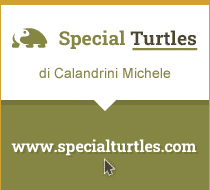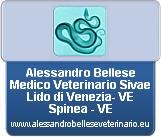With turtle eggs, that absolutely must not be moved or turned, exception made for the few hours immediately after the laying and only to be carried to the incubator, we’ll use a small LED light, kept in touch with the egg shell, in a dark room.
In order to make it easier, if you’re lucky and you assisted the laying, you can clean the eggs with warm water.
A clean egg, like the one in the pictures, will be easier to check.
Candling shouldn’t be done too often, especially in the last incubation days, since the light bothers the turtle that could decide to break the egg prematurely.
It would be better to do this operation very quicly, in order not to keep the light on the egg for too long.
In this sheet, I’ll show the development of the egg from the first week to the hatching day, with a picture per week of a Geochelone Centrochelys Sulcata.
I use a simple LED light (with cold light) that perfectly suits the dimensions of the egg.
Remember, the smaller the light, the easier it will be to “read” the egg.
We should start saying that incubation periods change from species to species. The incubation period of a Geochelone Centrochelys Sulcata usually goes from 90 to 120 days. The egg in the pictures took 87 days to hatch.
For this, don’t take the indicated times literally, but take example by the pictures to see if the egg is fertile or not.
Let’s start with the pictures.
First incubating week, as you can see, a bubble shows up that will shortly descend to the egg yolk. So, if you see this bubble, then the egg is fertile.
-------------------------
Second week, the embryo starts developing. Check it out at the centre of the egg.
--------------------------
Third week, the embryo goes on with its development.
---------------------------
Fourth week, the embryo moved to the centre of the egg, no more visible for now, but the first capillaries shows up. They will slowly fill the egg completely.
--------------------------
Fifth week, capillaries start expanding.
--------------------------
Sixth week, in the lower part of the egg the turtle start developing!
--------------------------
Seventh week
--------------------------
Eighth week
--------------------------
Ninth week, as you can see by the picture, right under the light there’s an air bubble that in the last weeks will grow. This bubble allows the turtle to move when it’ll be the time to get out the egg.
--------------------------
Tenth week, the egg is almost completely black, the turtle inside is well grown, and at this point the candling operations must be done in a couple of seconds.
--------------------------
Eleventh week, air bubble always bigger, the rest of the egg always darker… we’re almost there!
--------------------------
Twelfth week, suddenly in the egg something is happening, the turtle is moving…
---------------------------
Twelfth week and three days…
What can we say? Nature always amazes us, in a few shots, here is the miracle of life
I hope this sheet can be helpful and you appreciated it.. see you soon!
Originally written by Simone
Translated by Drakul
Checked and corrected by Ugo
 Benvenuto su Tartarugando, il forum tematico specializzato nell'allevamento di tartarughe e di altri rettili.
Benvenuto su Tartarugando, il forum tematico specializzato nell'allevamento di tartarughe e di altri rettili.






 Elenco delle sezioni
Elenco delle sezioni Elenco delle Categorie
Elenco delle Categorie Nuvola Tag
Nuvola Tag



 Articoli recenti
Articoli recenti